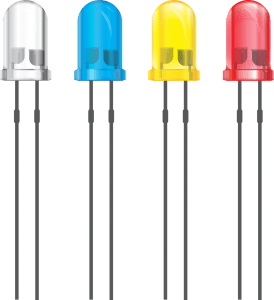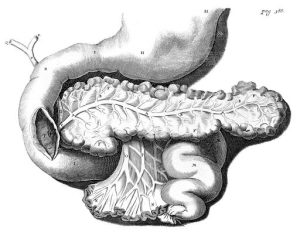LED lights have long been an integral part of our lives. This post cannot possibly list their many uses in the 21st century, as they have become almost ubiquitous. From car headlights through street lights, traffic signals, residential and commercial lighting to illuminating the most advanced TV screens. The reason for this is that compared to the commercially available incandescent bulb (invented by Edison in the late 19th century), the LED bulb is much more efficient. It is approximately 20 times more energetically efficient, by emitting very little heat and consuming less electricity. It is small, relatively inexpensive to manufacture and durable for several years.
The traditional incandescent bulb works on a principle called “black body radiation”. Heated bodies emit electromagnetic radiation. If you heat them enough (up to hundreds of degrees Celsius) you will even see light visible to the human eye. A good and simple example of this is a toaster oven. Turn it on and set the temperature to 300-350 degrees. After a few minutes, you can look at the heating coils (do not touch!) and see them glowing red. This is black body radiation. When it is visible to us, it is usually accompanied by another strong electromagnetic radiation in the IR field, which is absorbed by the bodies (objects) and heats them.
A diode is an electrical component that transmits current in a single direction. The diode consists of semiconductors. I will not expand on the theoretical explanation but just note that once the diode is connected to a voltage source it will transmit current only in one direction. For that same direction of flow, a minimum voltage is required – a “threshold voltage” in order for an electric current to flow through it. Think of it as a kind of hurdle limiting the electrons flowing in a circuit. When there is enough energy for the electrons to jump over the hurdle they will “skip jump” and continue to flow in an electrical circuit. This skip causes the emission of energy during the electrons passage in the circuit.
It has been found that the classic diode also emits light. That light is in the IR field that is not visible to the human eye. For example, from a short and simple calculation, a diode made of silicon will emit radiation at wavelengths around 2000 nanometers. The visible light with the shortest wavelength is red and its wavelength in the region of 700 nanometers. This is why the diode is just a D and not an LED. It emits light, but not in the spectrum visible to the human eye.
During the last century many scientists were engaged in research and development in the field of diodes and experimented with different materials. When testing Silicon and Germanium, scientists discovered a phenomenon whereby light was seen being emitted from the diode while an electric current was flowing through it.
The biggest and most significant breakthrough was made by a Japanese scientist named Nakamura. He and his colleagues won the 2014 Nobel Prize in Physics by inventing the blue LED. Not only were the technology and knowledge behind the invention noteworthy, but the practical implications of this breakthrough were immense. The human eye recognizes a combination of red, green and blue light (RGB) respectively as white light. Once the blue LED became commercially available to products, a combination of the three colors and more could be used to create lights in different shades of white and thus basically replace traditional lighting with more efficient LED lights.








